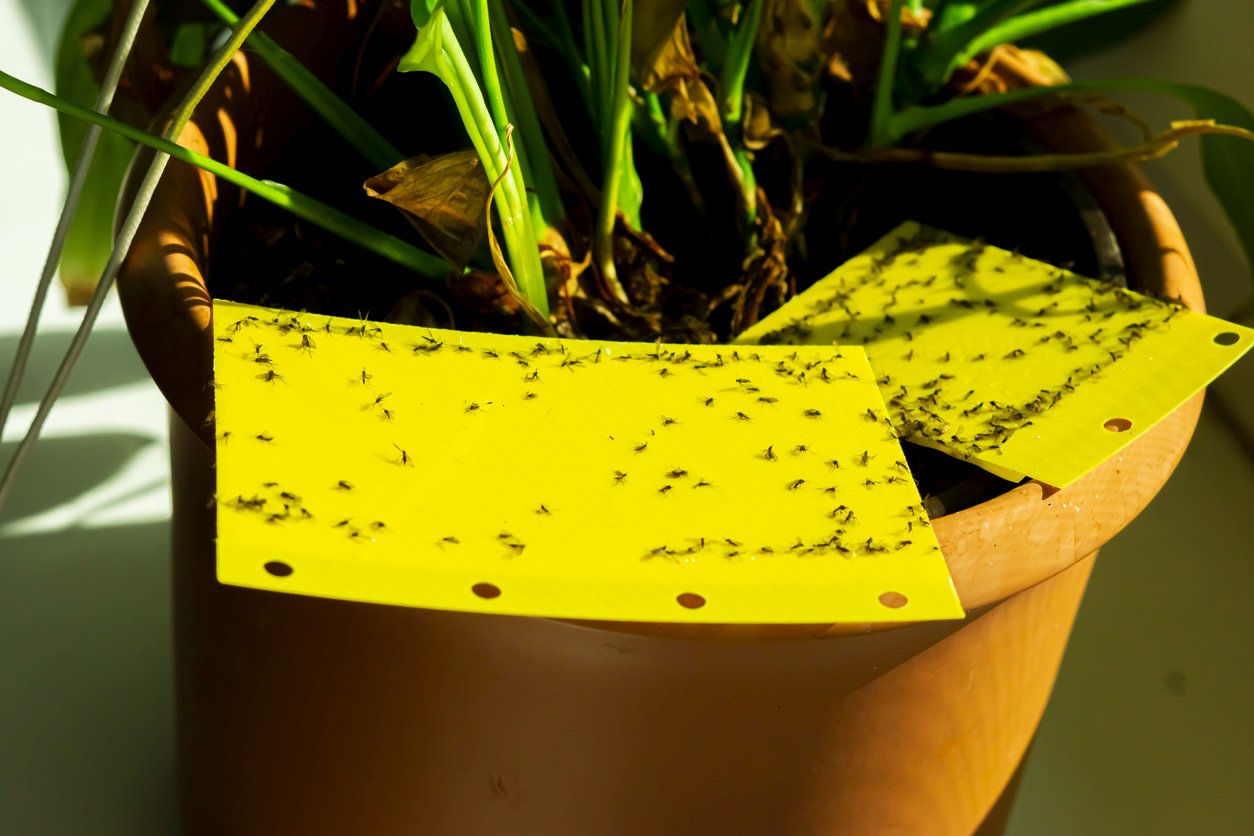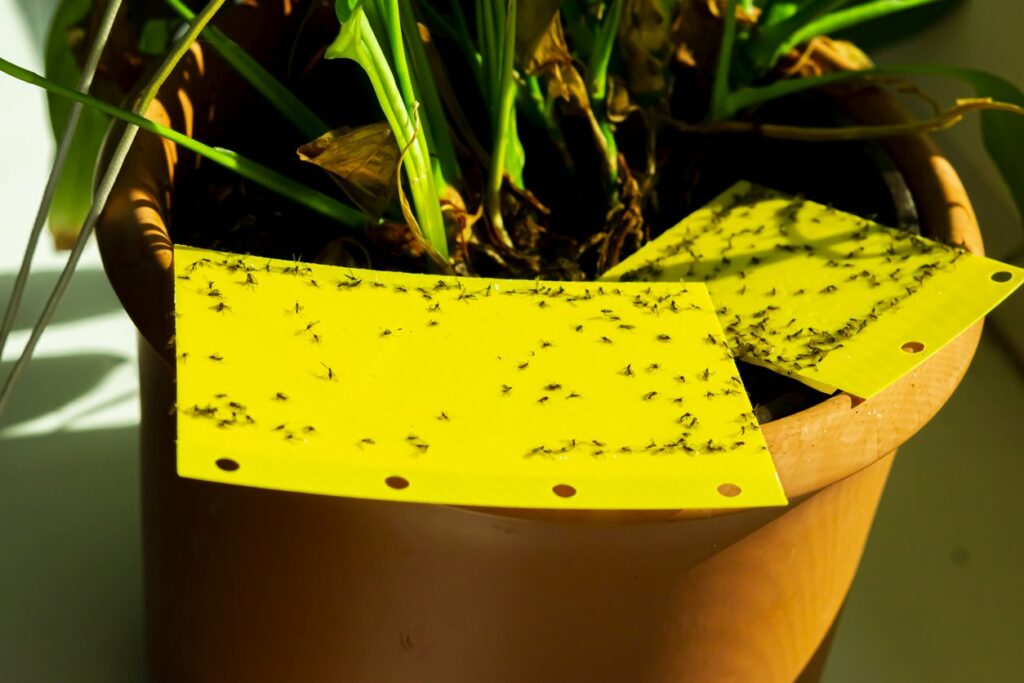Control Fungus Gnats With Cinnamon: How To Effectively Suppress Fungus Gnats On Houseplants
Nothing is more stunning than watching your houseplants grow from square one without any snags. Most gardeners often opt to prepare seedlings for their soon-to-be indoor plants during early spring or late winter. Growing your houseplants using seeds is the most potent method to produce pure and variegated species that you’ll hardly come across in your regular gardening store.
Even when you have the unfaltering zeal to make your plant thrive for decades, having to deal with fungus gnats would outrightly be a dreadful experience. At the same time, you don’t want to spend on chemicals that cost an arm and leg —only to end up with the very least results. You can still get the job done using less harmful and low-priced remedies which we’ll discuss in this guide. So read on to find out.
What Are Fungus Gnats?
Fungus gnats are hurtful houseplant pests that resemble fruit flies, except for the fact that they’re a bit darker and dominantly hide in wet plant soil, sink drains, or damp locations. They also prefer to dwell in areas with heavy fumes of carbon dioxide (CO2). These insects —also known as soil gnats—develop indoors throughout their life cycle in moist areas and grow up to about 1/8 inch long when they reach their adult life.
Mature fungus gnats usually don’t cause any serious harm, compared to the larvae which suck the sap on the roots and eventually cause the plant to lack essential nutrients. If you spot any gray or white worms with blackheads that look shiny and translucent, then chances are high that your plant could be struggling with larvae infestation. In most instances, adult fungus gnats prefer soil with too much moisture since it works out as a perfect spot to lay eggs which later hatch into larvae. They also find soil that’s amended with organic matter suitable for hatching.
What Damage Do They Cause?
The larvae will leech off of your plant’s nutrients, so you risk losing it if the infestation is massive. The damage will worsen eventually. Fungus gnats tend to hunt for a large stock of fungi or decaying plant matter so their larvae can have enough to feed on. The most undemanding way to keep fungus gnats at bay is not overwatering your plant. Most newbie gardeners often overlook this part. Too much moisture getting stuck beneath the topsoil for long hours will accelerate the infestation. So you want to work with an interval that allows the soil to dry out completely between waterings.
Another common problem your houseplant will highly likely face is seedling damping-off which is usually caused by fungus or mold. Damping-off hits vegetables and flowering plants the most. It’s quite common in young seedlings mostly those growing in trays. Mature plants also risk developing a weak root system. And if the infection persists, the roots will begin to decay. The two uncouth fungi that frequently cause this condition are Phytophthora and Pythium. One of the early signs of damping-off to watch out for is the wilting of leaves.
The seedlings might also fail to sprout from the soil and their stems will look discolored. If you’re using a potting mix made of compost or peat moss, there’s a high risk of seedlings facing a knock-on effect caused by fungus gnats and damping off—hence it would be ideal to replace it with vermiculite or perlite if you spot any acute damage.
How to Get Rid Of Fungus Gnats
Before we even dive further into the most effective remedies to work with, it’s essential to note that the life cycle of fungus gnats develops at a rapid speed. So using a cocktail of control methods would help fight fungus gnats both at adult and larval stages. While each method—be it physical or biological—has its own set of tangible benefits, the ultimate goal is to achieve results without spending too much. You also want to consider the safety factors before choosing a control measure.
Physical Controls
Cinnamon
Cinnamon is a fruitful natural option that’s mostly used as a fungicide by many households that are strongly passionate about the well-being of their houseplants. You can purchase cinnamon powder at your nearest gardening store, mix it with water and sprinkle the solution on the topsoil. This antifungal remedy gets rid of both adults and larvae quite impressively. It also helps control damping off, so you won’t need to look out for any other quick fix. You’d hardly find such a control method that works both ways. Repeat this process once or twice every week until you begin to see some change in your plant’s health.
Vinegar
Apple cider vinegar isn’t only used to detox and boost metabolism. It also works perfectly well as a natural insecticide. Vinegar helps control both fungus gnats and fruit flies quite impressive. This organic solution yields quick results when you mix it with a few drops of liquid dish soap. Blending vinegar with liquid soap or beer allows the surface tension of the solution to break easily. To get started with this hack, fill a jar with the mixture, drill a few holes on the lid, and make sure they’re big enough to let fungus gnats pass through. Place the jar on the most affected area and wait for the insects to drown. Be patient and repeat this exercise until you’re able to see any solid improvement.
Sticky Traps
You can choose to purchase some sticky insect traps or make a few yourself. Using sticky traps as a control method is a no-brainer. And no matter how outlandish this idea sounds, sticky traps not only get rid of gnats but also mosquitoes, aphids, and whiteflies, so you’ll be able to toss off other nagging insects quite swiftly.
To end the life cycle of fungus gnats using this method, you need to:
- Smear some honey on two bright sticky notes.
- Place a drinking straw or chopstick between the two cards.
- Glue them together and position your trap horizontally on the topsoil of your plant’s growing medium.
- You might also want to set another one vertically so you can trap the fungus gnats and whiteflies from all angles.
- Placing your traps on the edges of the pot would keep them from falling off.
Sand
If you amend about 1/2 inch of the topsoil with sand, water will drain a lot faster. Since soil that retains moisture for too long is usually a breeding ground for adults that need to lay eggs, using sand will speed up the drainage process, and the fungus gnats will be schemed into thinking that the soil is too dry to incubate the eggs.
Potato slices
Raw potato slices also help control the number of fungus gnats leeching off nutrients from your houseplants. This cheap and easy remedy gets rid of heavy larvae infestation on the double since the gnats are stoutly attracted to the taste and smell of raw potatoes. Using this natural control method is much safer than synthetic chemicals since it doesn’t cause any side effects to the potting soil. The best time to use potato slices is when the soil is a bit moist. And here’s how it works:
- Cut a few potatoes into thin but strapping slices.
- One or two slices should be enough for each growing pot. You’ll increase the number soon as the effect and thickness diminish.
- You should see tangible results within 2 days, but the gnats can be drawn to the trap even sooner, depending on how heavy the infestation is.
- Dispose of the old tater slices once they trap too many gnats and repeat this process over again.
Diatomaceous earth (DE)
Food grade diatomaceous earth is natural dust that’s extracted from fossils. With a 2% concentration of crystalline silica, DE is commonly used to make insecticides. It gets rid of the outer waxy coating from the exoskeleton of fungus gnats. This mineralized fossil is non-toxic and yields results by simply spraying it on the top layer of the infested soil. However, while carrying out this exercise, you need to be careful not to inhale the dust since it can cause some respiratory issues. You can also opt to mix it with the potting soil before planting—to get rid of both gnat larvae and adults before they cause any grievous damage. Aside from fungus gnats, DE also gets rid of bedbugs slugs, and fleas.
Biological Controls
Chamomile Tea
Fragmented chamomile tea is yet another natural fungicide that helps control damping-off. You need to wait till the tea cools off a bit before using it on your growing medium to suppress the fungus gnats. To get started with this remedy you simply need to prepare a quart of strong chamomile tea, dilute it with a gallon of water, and use it during the normal watering sessions.
Bacillus thuringiensis (BT)
(BT)Bacillus thuringiensis (Bt) is a breed of bacteria that naturally live in the soil. They produce protein components that are usually toxic to some insects. This naturally-existing bacteria mostly kills worms, larvae, and caterpillars. You’ll find the bacteria branded as Gnax Nix in many stores that sell insecticides. BT is also used in organic greenhouses but isn’t so effective on hydroponics.
Beneficial Nematodes
Beneficial nematodes are commonly used to control fleas, moths, weevils, ants, together with fungus gnats. But not all will help control the larvae infestation in your growing medium. Steinernema feltiae, to be exact, is a nematode species that feeds on the gnats bugging your houseplants. Beneficial nematodes only kill pests and don’t pose any serious health risks to humans. Although they can help get rid of the larvae that are trying to rest easy on your plant’s soil, beneficial nematodes aren’t cheap—so you might only need them when the infestation is massive.
Hydrogen Peroxide
Using this oxidizing agent to get rid of troubling pests requires no hard effort at all. Just mix one part of hydrogen peroxide with 4 quarts of water, and make sure the concentration doesn’t exceed 3%. Wait for the moisture on the topsoil to dry out completely and gently pour the solution like it’s the usual watering session. It’s also normal for the soil to produce some hissing or splattering sound after this exercise.
Drying Out Soil
For the most part, infestations will occur due any time you persistently overwater your plants. So by using spaced-out watering sessions, you can practically make the soil inhabitable for fungus gnats. But at the same time, you don’t want to neglect your houseplants especially if they’re not drought resistant. This remedy alone, however, can’t entirely weed out the fungus gnats. You, therefore, want to couple it up with a few other control methods which we’ve listed in this guide.

